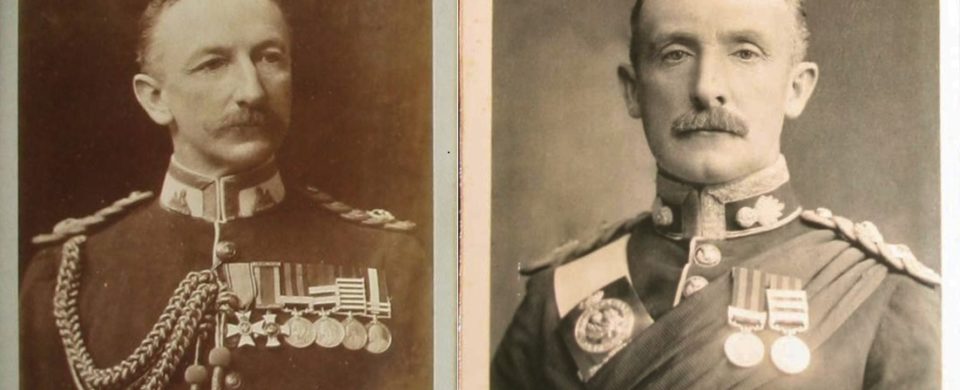Foreign medals on our display - Honours, medals and decorations case
Medals The Royal Scots Fusiliers WWI
Soldiers from The Royal Highland Fusiliers and our antecedent regiments have fought in virtually every war, battle and conflict since the formation of The 21st of Foot (later The Royal Scots Fusiliers) in 1678. So, our collection of medals is probably one of the most comprehensive: dating from the Military General Service Medal (MGSM) that was issued to soldiers who fought in the French Revolutionary & Napoleonic Wars (1793-1814) and the Anglo-American War of 1812; to the most recent conflicts in Northern Ireland, Iraq and Afghanistan.
The collection also contains a considerable number of gallantry awards, including six Victoria Crosses.
We believe that medals should ideally remain with the recipient’s family; however, should that not be possible, then we are delighted to accept them as donations so that they may be with those of their comrades in the Museum which preserves the history and memories of the Regimental Family. We are currently unable to display much our considerable collection of medals; however, when we move into the Kelvin Hall, it is our intention to have medal drawers, so that all the medals will be available to be viewed by visitors.
This week, we are going to focus on medals from foreign countries that which have been awarded to some of our soldiers in the past for various deeds on display in the Museum and possibly not familiar to many of our visitors.
Colonel Quentin Agnew DSO MVO was born in Dumfriess and served in India, South Africa and WWI – he died in 1937. The Order of the Red Eagle, 4th Class, was presented to Colonel Agnew during the funeral of HM Queen Victoria by Kaiser Wilhelm in 1901.

· The Order of the Red Eagle, 4th Class, was a German order that was awarded from 1792 until the abdication of the House of Hohenzollern in 1918. The predecessor of this order was founded in Brandenburg on 17 November 1707 as the Ordre de la Sincerité, becoming the Order of the Red Eagle in 1777. After the Kingdom of Prussia absorbed the province, King Frederick William II revived the Order as a Prussian royal order, which was second only to the Order of the Black Eagle. In 1830, following a further revision of the Order, a 4th Class was added; and from 1830, it was awarded with the presentation of golden swords for military achievement.

Brigadier-General W H Bowes, a veteran of campaigns in India and WWI was presented with many awards during his 40 years of military service, but we will focus on just two:

· The award of Officer of the Légion d’Honneur is the highest French order of merit for both military and civilians. Established in 1802 by Napoleon Bonaparte, the current Grand Master is the President of the French republic. Under the French monarchy, the award was given exclusively to noblemen and Catholics; however, the first modern award was given to “men of merit”. During WWI, 20,000 of these orders were awarded to non-French recipients and, for the first time it was awarded posthumously.
· The Czechoslovak War Cross of 1918 was presented for acts of military valour during the years of the First World War. The medal was created on 7 November 1918 and was issued to citizens of Czechoslovakia, Germany and Austria, who served in the Czechoslovakian armed forces during WWI with distinction and bravery. Similarly, it was awarded to those who served with distinction during border conflicts with Hungary and Poland. The award to soldiers of Allied forces was largely due to their perceived role in the formation of the Czechoslovakian state. A similar award was issued in WWII by the Czechoslovakian government in exile in London.

These are just three examples from our displays which show medals that may not be immediately recognisable to our visitors; and demonstrates how our soldiers were honoured by other nations for their contribution to their countries.
You can find these medals in our “Honours, medals and decorations” case in the museum.

